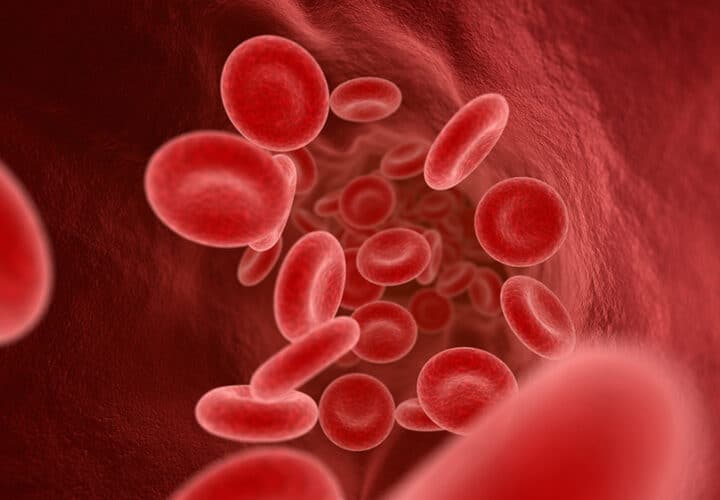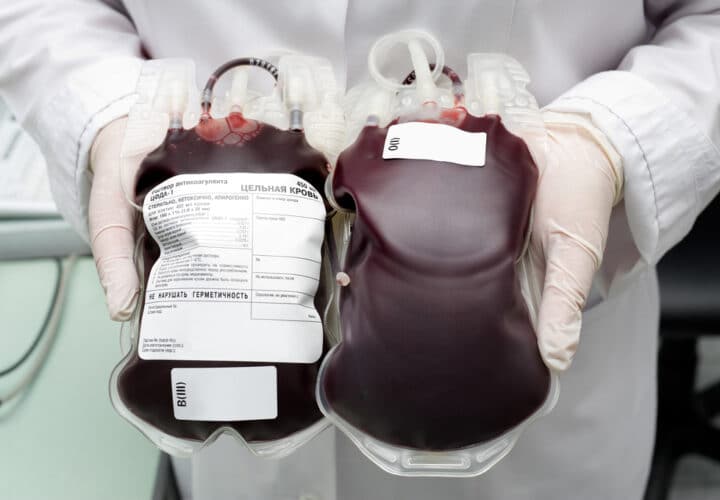Alkahest is a company funding research involving "young blood" plasma donations with the aim of slowing aging and stopping Alzheimer's.
Earlier this year, the F.D.A. issued a warning to Ambrosia, a company that was selling plasma transfusions of “young blood” to elderly people, suggesting it may stop aging. While the F.D.A. announced there is “no proven clinical benefit” of these transfusions, it’s not the first time the practice has been pursued: Stanford researchers published a study on young plasma in 2017.
The Stanford researchers collaborated with Alkahest, Inc., a biotechnology company that sponsored the 18-person study. While researchers found participants with mild to moderate Alzheimer’s who received the plasma fusion seemed to perform better on daily tasks like grocery shopping, this finding was based on a questionnaire that was given to their caregivers. The participants did not show any other cognitive improvement.
Read: FDA Issues Warning to
Young Blood Alzheimer’s Treatment
Researchers like neuroscientist Tony Wyss-Coray of Stanford University who have been studying how young plasma might benefit aging bodies have spoken out against companies like Ambrosia, suggesting that selling these transfusions for profit without evidence is “abusing people’s trust.” The F.D.A. has allowed the Stanford researchers and Alkahest, Inc. to continue conducting clinical trials on drugs that come from proteins in young plasma. We spoke to Karoly Nikolich, chief executive officer and chairman of the board of directors at Alkahest, Inc., about their plasma protein trials, future trials they are conducting and whether they think developing therapeutic drugs derived from proteins in blood plasma may help people with neurodegenerative conditions like Alzheimer’s or Parkinson’s disease.
Q: In a 2017 study, your team injected plasma from young people into nine patients with mild to moderate Alzheimer’s. While participants did not perform much better on cognitive tests after the injections and you said not much could be concluded from such a small trial, what research has your team been focusing on since this study?
A: Since this study, we have focused on the changing functional proteins [proteins like antibodies and enzymes that perform certain functions in the body] of human plasma at a much deeper and scientific level. We call the functional proteins that increase or decrease with age chronokines. We have found that many of these chronokines, whether for better or worse, have something to do with the prevention or progression of the biological processes [like homeostasis and neural functioning] that lead to aging.
Certain molecule inhibitors [drugs] allow us to target these increasing chronokines and certain proteins in human plasma. Since 2017, we have focused on therapeutics that are more selective when targeting chronokines; in the original study, we targeted the whole plasma. We’re looking at certain parts of the plasma that only have several hundred proteins, rather than the 10,000 that exist in a whole plasma. Our preclinical research suggests that focusing on these plasma fractions is not only safer than focusing on the whole plasma, but it is also more successful.
Q: Are you currently working on developing additional human trials? How many participants will be in a future trial, and how will this study differ from the previous trial?
A: We are currently conducting Phase 2 in-human trials using plasma fractions that may help treat neurodegenerative diseases. We are using a plasma fraction called GRF6019 in both mild to moderate and severe Alzheimer’s disease. In addition, we are focusing on the protein fraction GRF6021 to try and help treat Parkinsonian dementia. We’ve recently completed a Phase 2 trial of an orally delivered molecule (AKST4290) that is meant to target the inflammatory protein CCR3 in patients with naïve and refractory macular degeneration and will be delivering this data at an upcoming podium presentation at the Retina World Congress in Fort Lauderdale on Sunday, March 24. Today, more than 200 patients have been dosed with Alkahest’s candidates (e.g. GRF6019) in clinical trials. Based on the promising data and clear safety that have been observed in these patients, Alkahest is working to advance all of their candidates through to FDA and other regulatory body approvals.
Q: What processes in the brain will this research target and what do you think you will learn from the new trial?
A: Our plasma fraction and small molecule candidates are inspired by and designed to target not just one particular process in the brain, but actually address the complex detrimental processes that cause age-related disease. We hope to treat Alzheimer’s disease, for example, not by focusing on one process or protein target, but on the underlying process of aging that tends to exacerbate all symptoms of Alzheimer’s disease.
In our recent Phase 2 trial of GRF6019 in severe Alzheimer’s, we will be treating 20 patients who are in a very advanced stage of this disease, which has been largely left behind in pharmaceutical research. If we find that GRF6019 can bring clinical benefit to these patients, not only will it bring hope to this population of advanced Alzheimer’s patients, but also to those at earlier stages of the disease.
Q: The F.D.A. recently released a warning statement to Ambrosia for offering plasma transfusions of young blood into older people. What would you say to companies who have been selling plasma transfusions to older people?
A: We cannot speak on behalf of other companies, but we can speak to our belief that it is critical for the good of public health that regulatory oversight and high scientific standards remain pillars of therapeutic development. Plasma protein targets, like any biotechnology protein target, deserve to be studied with deep and thoughtful research, rigorous clinical trials, broad regulatory oversight and controlled manufacturing processes.
By narrowing in on certain parts of plasma and the proteins in these areas to understand the biological influence of chronokines, plasma proteins which increase or decrease as we age, we are building upon the science that drove our founding by Stanford University neuroscientists. We are developing FDA-reviewed therapeutic options, including selected plasma fractions that are created from pooled plasma by a well-regulated protein fractionation process. Our plasma fractions do not have clotting factors and immunoglobulins [a protein created by plasma cells that the immune system uses to neutralize bacteria and viruses]. Therefore, they are safer than whole plasma from a single donor to improve safety, particularly in older patients with a weakened immune system. First and foremost, we believe in the safety of our patients, and that rigorous clinical trials are the best way to test for efficacy and safety. Last month’s announcement by the FDA is encouraging for clinical stage biotechnology companies like Alkahest who are dedicating the time and resources necessary to meet the endpoints set forth by the FDA and to deliver safe, efficacious therapies to patients.
Q: What are some of the risks associated with plasma infusions and how will these be taken into consideration in your next trial?
A: Infusions of full plasma contain immunoglobulins and clotting factors that can trigger immune responses or other harmful processes in a recipient’s circulating blood. Single donor infusions can also expose treated patients to infection and compatibility risks. Because our plasma faction candidates come from carefully screened pooled plasma, and have proteins like immunoglobulins and clotting factors removed, this has not been an issue for us to date. In previous trials, we have has shown that our plasma fractions and small molecule CCR3 inhibitor are safe and well tolerated.
Q: If your results suggest young plasma can improve cognitive function in those with Alzheimer’s, what would that mean? Do you believe young people would consider auctioning their blood for high prices, similar to how the egg donation industry works?
A: Though the complexities of supply chain management are something we would have to consider once approved, right now, we are solely focused on driving our therapeutics through FDA clinical trials and delivering worthwhile benefits to patients with age-related diseases. If our clinical candidates do indeed improve cognitive function, this would be extremely meaningful for patients with Alzheimer’s, Parkinson’s or other diseases which have not been adequately helped by available medications. In the long run, we believe that proteins of the most beneficial chronokines could offer an alternative to plasma fractions, but plasma fractions offer us the best path forward today to further both the basic research and initial clinical testing.
We look forward to sharing the data from both our small molecule AKST4290 in Age-Related Macular Degeneration and GRF/AKST6019 in Mild to Moderate Alzheimer’s Disease later this year.
[ Next: Can We Slow Down Aging? Harvard Scientist Says He’s 20 Years Younger Than His Biological Age ]



